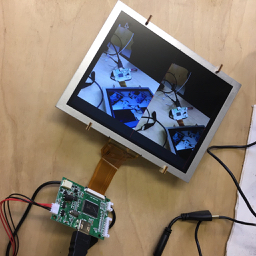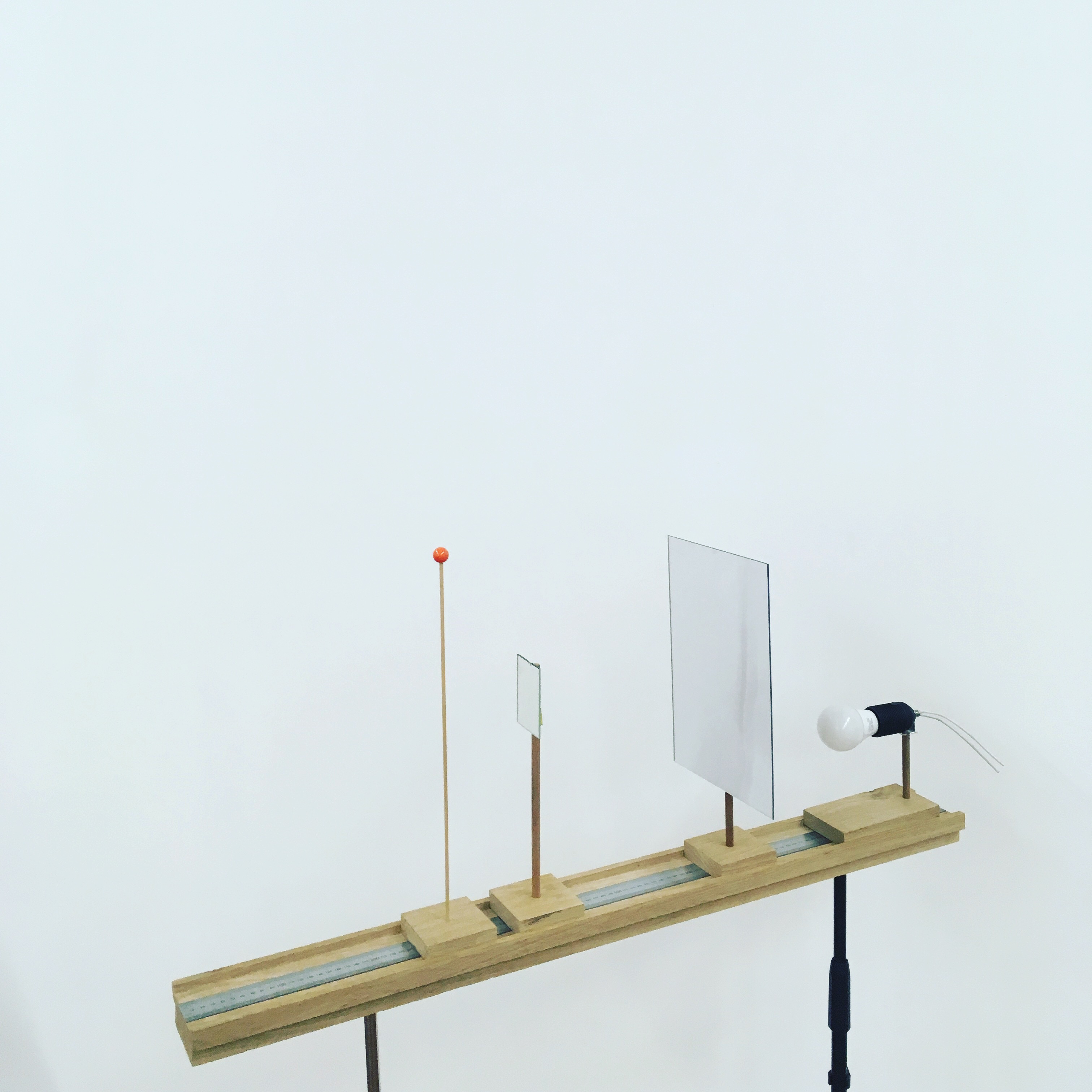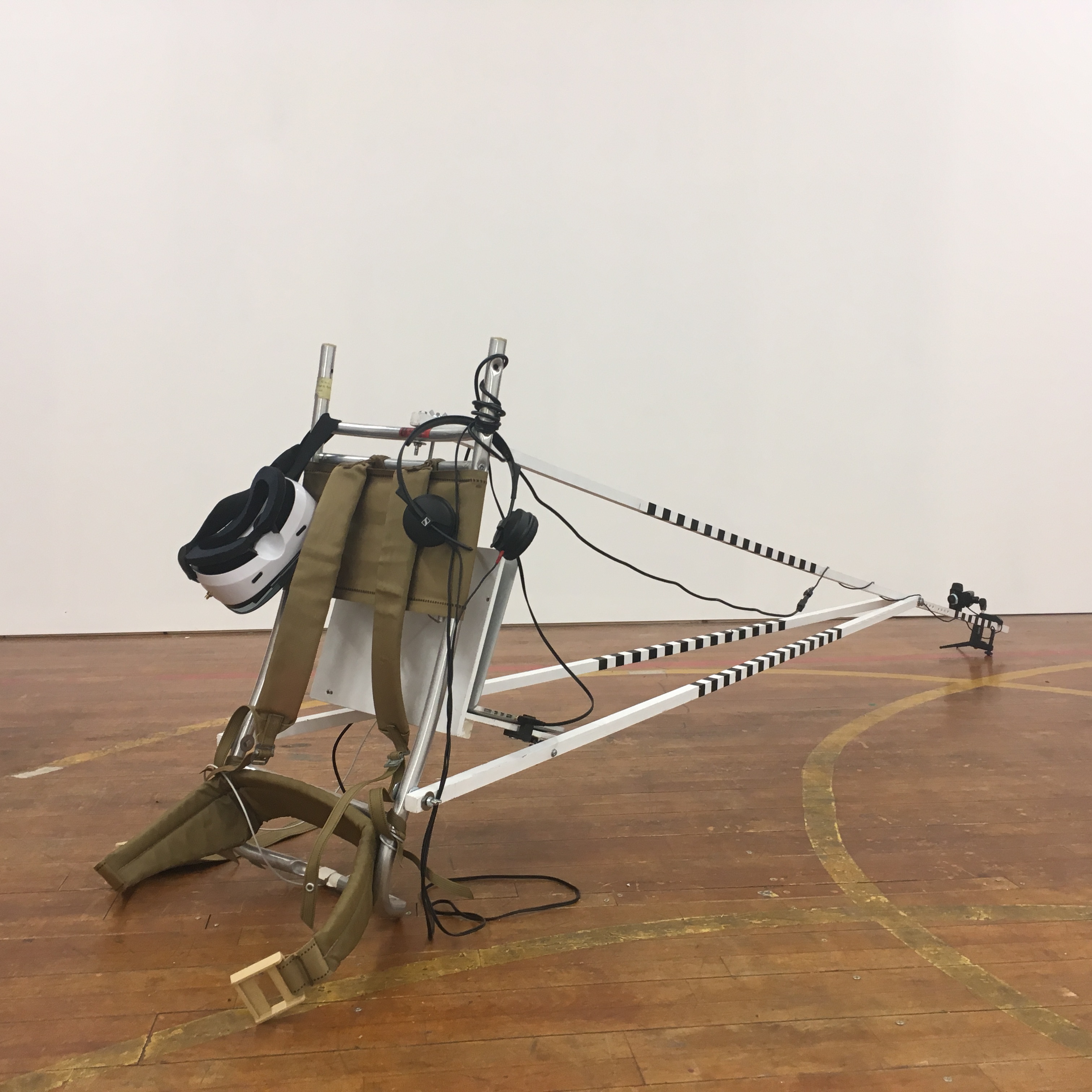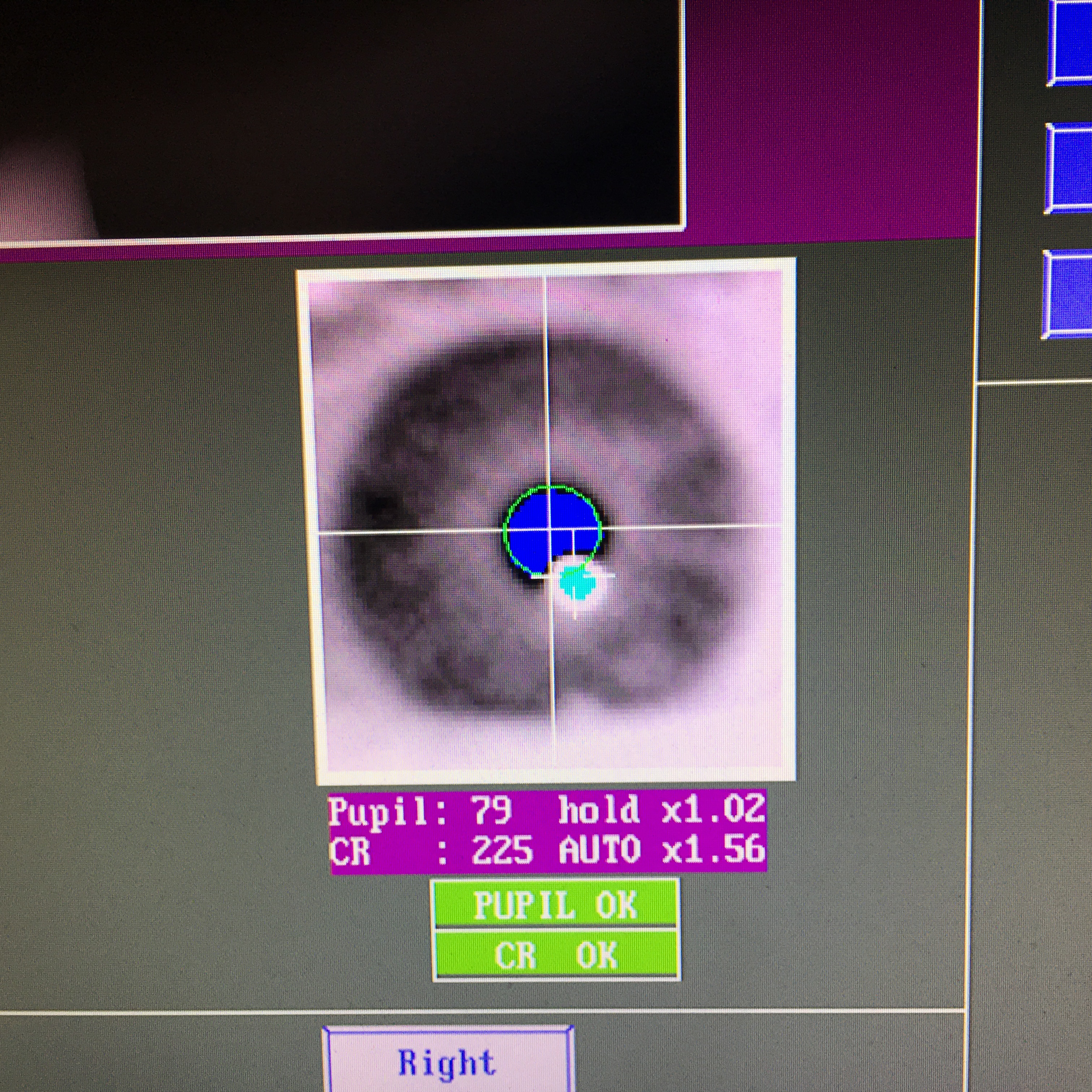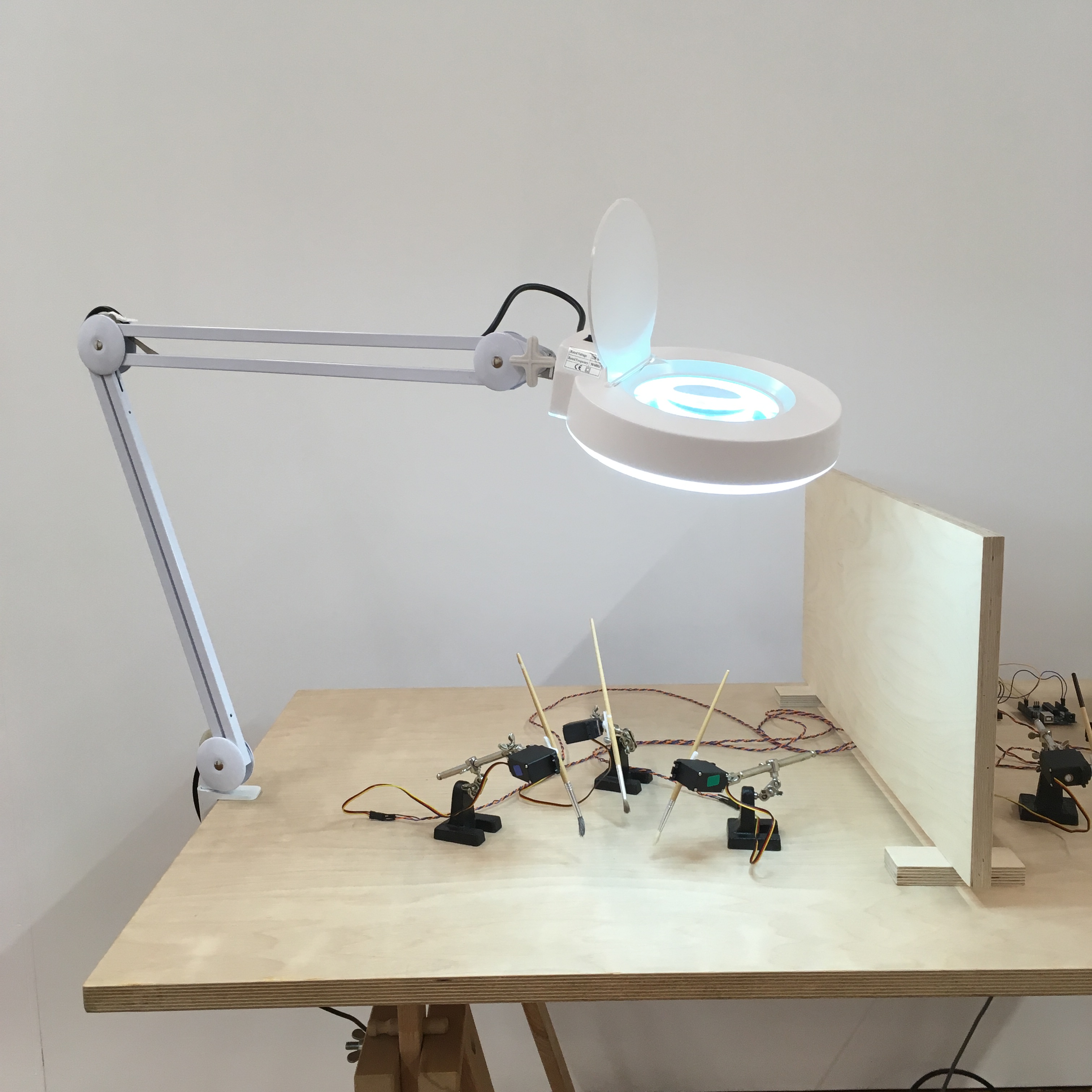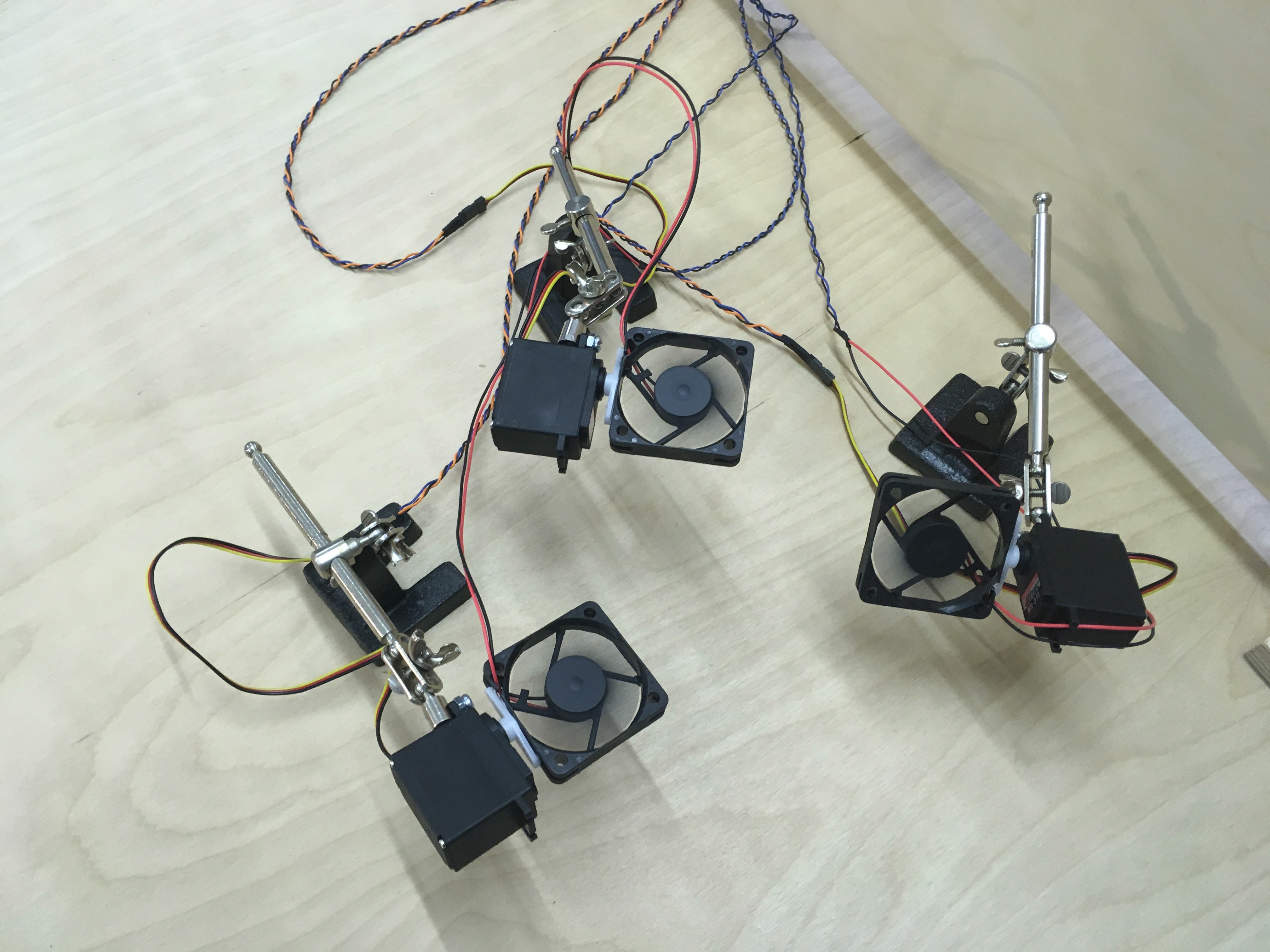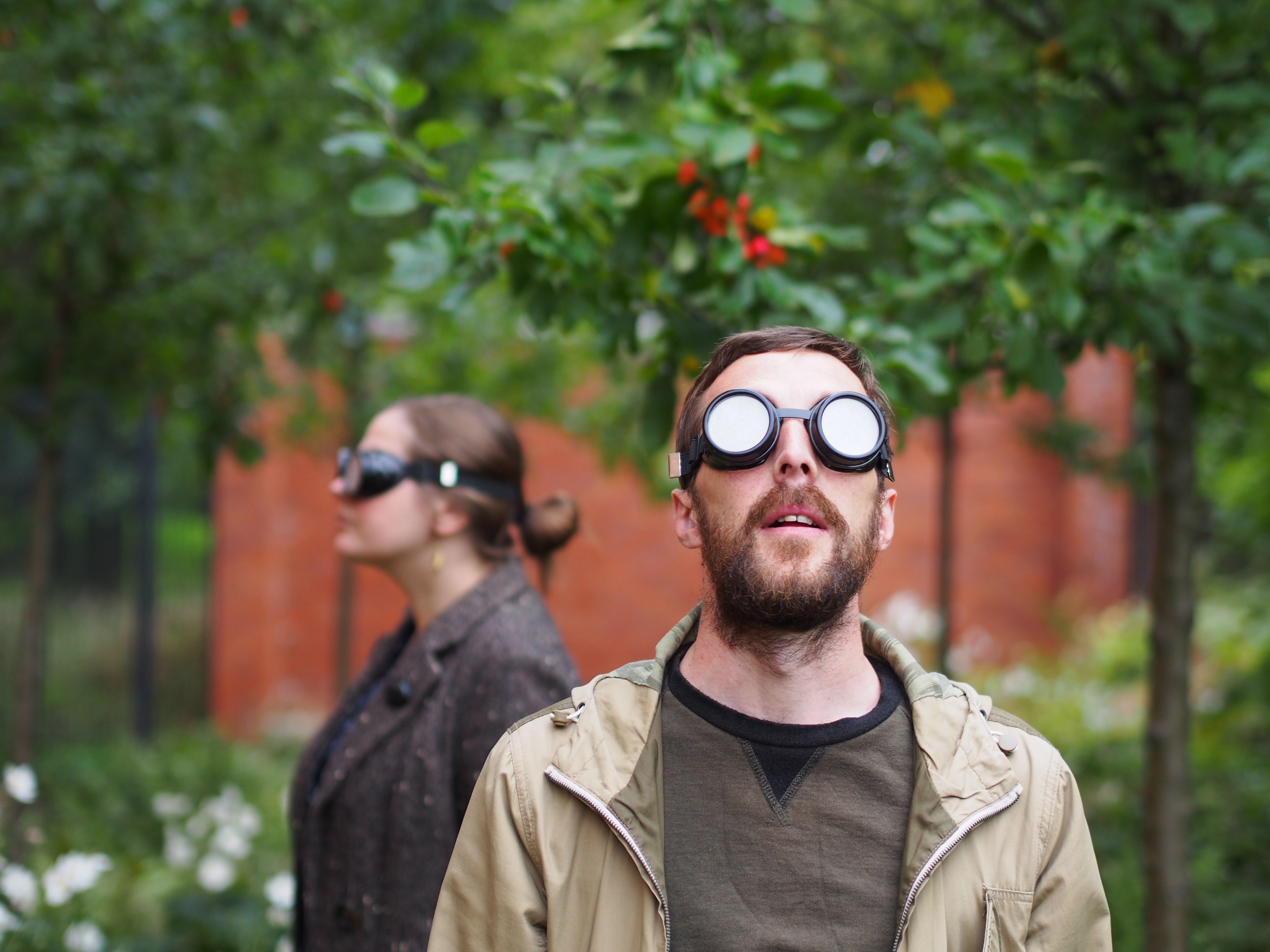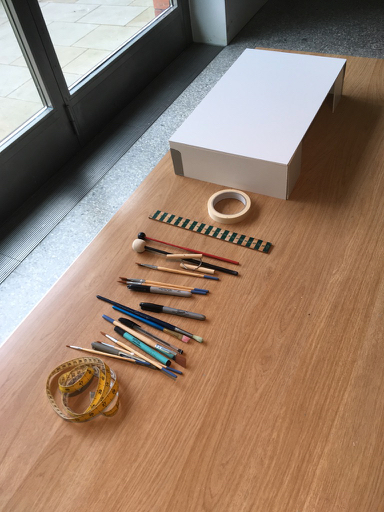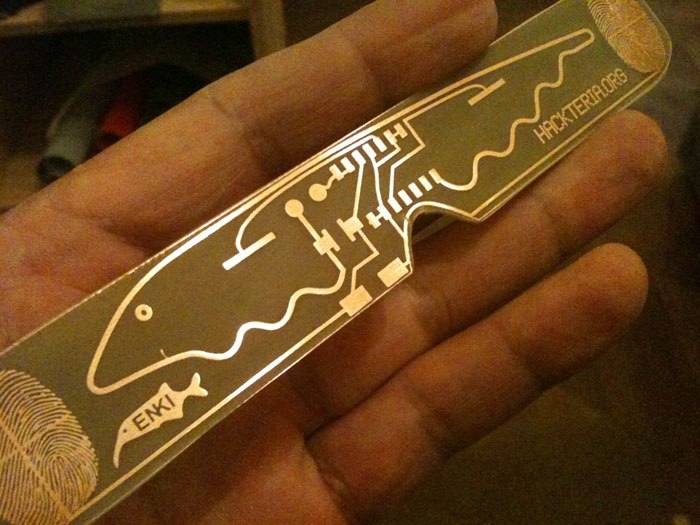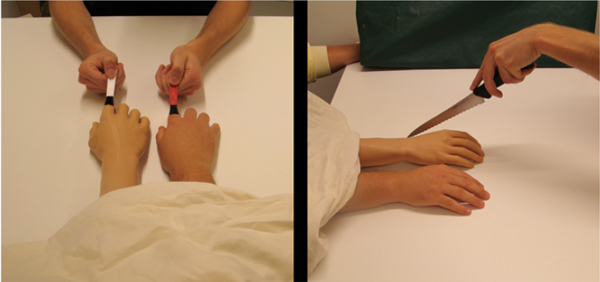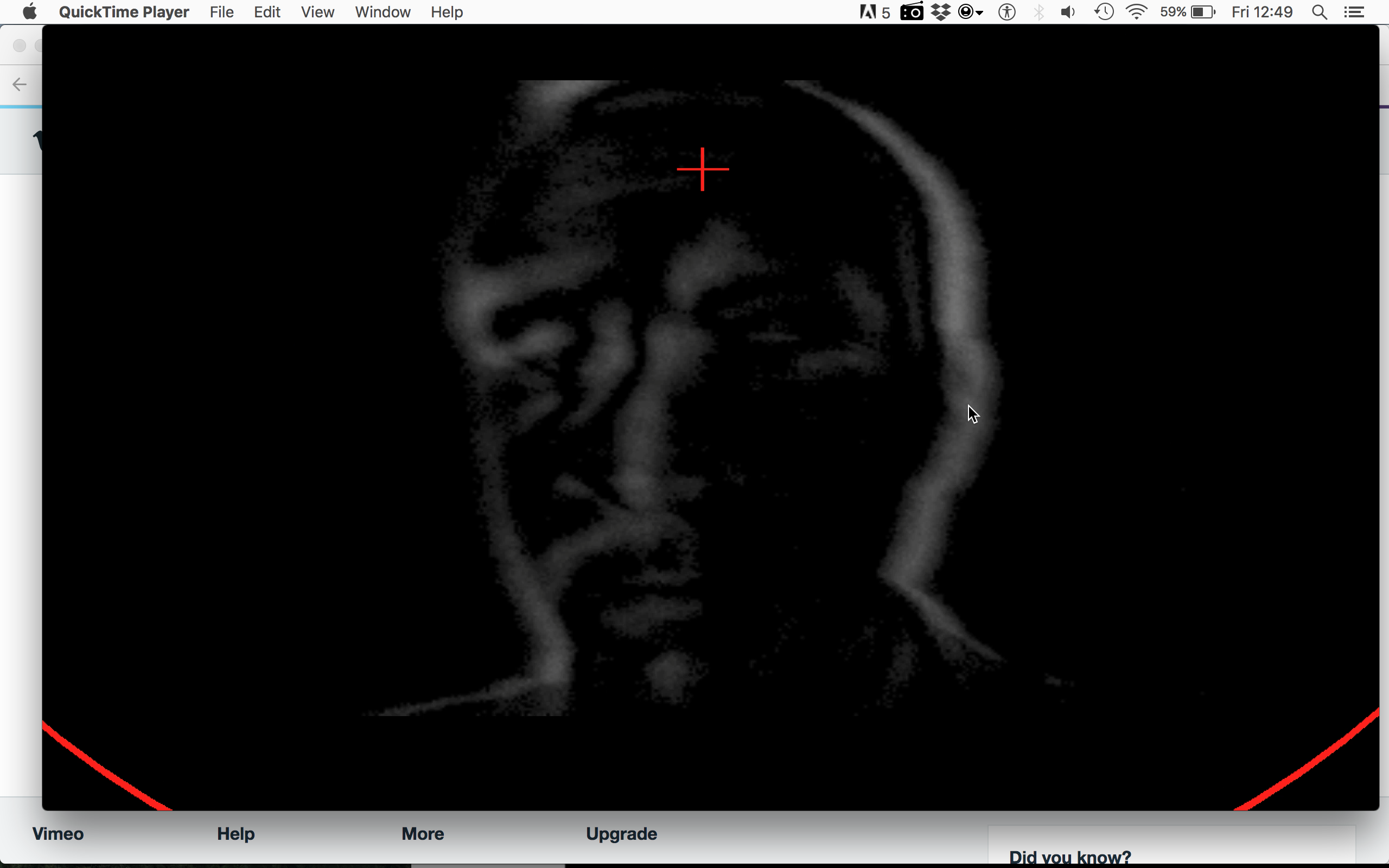Experimenting with servo controlled camera rig for Autoscope. Servo controlled through PureData. Next to connect these to the OSC data from iPhone accelerometer....
ART
Meta-Perceptual Rail
The meta-perceptual rail is a linear track along which mount mirror apertures and other props and stimuli can be mounted. It is used for meta-perceptual experiments, testing the limits of visual and meta-perceptual experience. It can be used as an introspective device to explore metaphysical and somaesthetic questions of our experiences and location self in relation to the physical body. 'Such rails are typically made of wood and designed to be very stiff. The rail normally begins with a chin rest followed by a graduated grove extending from this point. This allows other features such as holders for perceptual stimuli, filters, apertures, mirrors and cameras to be bolted down and precisely shifted along the length of the rail.'
Marina Abramović – An Artist’s Life MANIFESTO
Thinking about manifestos, this seems to resonate somehow with both life and art. https://www.youtube.com/results?search_query=Art+Meets+Science+and+Spirituality+in+a+Changing+Economy https://hirshhorn.si.edu/wp-content/uploads/2012/04/An-Artists-Life-Manifesto.pdf
Autoscope backpack
My alloy backpack arrived and has proved perfect for the job of supporting a laptop and a 2m long boom. As an object, It certainly has a vintage feel and a clear aesthetic reference to Roman Signer. this seems entirely appropriate, something about the strangeness of the endeavour as well as the metaphorical notions of escape and travelling through the imagination.
Constructing a sense of self
"He felt dizzy, stood up, turned around, and saw himself still lying in bed. He was aware that the person in bed was him, and was not willing to get up and would thus make himself late for work. Furious at the prone self, the man shouted at it, shook it, and even jumped on it, all to no avail..." This article encapsulates some of the most important ideas, concepts and developments which lead towards the experiments on the simulation of out of body experiences. The article mentions Peter Brugger, Olaf Blanke and Thomas Metzinger, as well as some details of patient experiences, and the story of how this experiment came about. As well as the illusion of seeing one's self"autoscopy' There
Alfons Schilling
"Schilling's work is a discourse on the anatomy of illusion. a return to the physical experience of perception. this work locates the visual experience in the brain by completing its visual text there. The art of Schilling opens up a critical dialogue between the arts. This view of art as a sense experience, as the convergence of the work and the perceiver, which brings the work into existence, establishes the basis of that experience as a means of deconstructing reality and constructing through that experience a path toward a renewal, and the opening up of the perceptual (sense) experience." John G. Hanhardt, Curator of Film and Video, Whitney Museum of American Art, New York 1977. Random Dot stereo works https://www.alfonsschilling.net/werke/randomdot-stereo/ http://www.vasulka.org/archive/Artists6/Schilling,Alphons/SchillingPoster2.pdf http://www.vasulka.org/archive/Artists6/Schilling,Alphons/ElectronicSpaces,etc.pdf An article discussing the
Eye tracking experiment planning
Inspired by last weeks conference and some examples of how artists are working with Eye Tracking, I went back to BEAM Lab the following week to start the process of learning how to set up my own experiment using Eye-tracking. My plan is to incorporate this with the strange face in the mirror experiment. My main problem is how do I calibrate the sensor - if I am to measure how they look at a reflection how do I map this precisely to the sensors. Normally the experiment has the participant looking directly at a screen surface, but how would this work with a reflected image? So I need to get a two-way mirror and perhaps get the participants to draw the
Tactile Anchoring Device [Images]
Carsten Holler / Olafur Eliasson
Carsten Holler is a key example within this study, often re- appropriating science for the purposes of art. Staging ‘Quasi-scientific’ experiments (Windsor, 2018) which transform the gallery into a laboratory. Often disorientating the viewer, or more appropriately, the participant. As well as the large-scale installations smaller performative works such as ‘Kit for Exploration of the Self’ (Carsten. Holler, 1995) take the form of durational perception changing instruments such as ‘Upside Down Glasses’ (Carsten Holler, 1994-2018). These both directly re-appropriate methods from experimental psychology (Stratton, 1896). Many of the works require the participant to travel through them or offer the opportunity to make decisions of which there are no return or unknown outcomes, further reinforcing this active notion of experience as
Augmented hands
‘Augmented hand series’ by Golan Levin, Chris Sugrue, and Kyle McDonald, 2013-2015) ‘MIRAGE Illusion Box’ (Roger Newport, 2008) These are two very similar projects which both transform the image of a hand in real time using Augmented Virtuality (AV, the digital manipulation of real-world objects). Both take the form of a black box, into which the hand is placed. When inside the participant can see their hand as if looking through a window into the box. Inside the box, a system of mirrors and motion tracking is used. An augmented or distorted digital image of the hand is relayed to a screen on the top of the box. Despite the technical similarities, both works stem from entirely different motivations. The ‘MIRAGE Illusion Box’ (Newport, 2018)
Be Another Lab
This International group interdisciplinary group adopt mechanisms employed in the cognitive sciences, such as the work of Mel Slater, and the arts. Their project ‘The Machine to Be Another’ allows anyone to experience a perspective from the body of an-other. The group speak of ‘expanding subjective experience’ and ‘understanding the relationship between identity and empathy from an embodied perspective’ (http://beanotherlab.org/) Using HMDs and live video, they have developed a number of critical applications. Investigating a wide range of issues including gender and disability. The group study the impact this work can have on people’s lives, employing methods of action research and co-creation. Be Another Lab embraces an open source approach. Sharing and developing their project through workshops, making the tools and
Labyrinth Psychotica
Labyrinth Psychotica is an artistic research project that aims to simulate the experience of psychosis. It uses multisensory [tactile and sonic] elements in combination with the maze environment, to create a fully immersive experience. The maze mechanism also serves as a metaphor for attempting to get inside the mind of another. The investigation aimed to not only portray an experience of psychosis but one that was ‘artistic’. It further asks if such an endeavour could prove ‘useful’. Though I can only speak from my experience of the work [1], it did seem effective in conveying elements of this experience, such as; loss of personal boundaries, and blurred borders between the body and space. Another element which resonates with Action Lab is the
Tactile Anchoring Device prototype 2
The first film of the Tactile Anchoring Device in progress, showing the use of brushes and fans to generate the illusion of an invisible hand... https://youtu.be/vHaB6HBbQrs The system is based on an Arduino controls two sets of identical stimuli which move in synchronisation with each other [ servo motor, articulating solenoids, fans, lamps etc] Once the participant is experiencing the illusion, the operator or autonomous systems can trigger a ‘shock’ or threat stimuli. This is currently in the form of a solenoid which releases a heaved plum line weight which drops into the empty space. See the project page here. http://antonyhall.net/blogtactile-anchoring-device/
Seeing with the tongue – Paul Bach-y-Rita –
"You don't see with the eyes. You see with the brain" Paul Bach-y-Rita, Science News Online 1 Sept, 2001; vol. 169, no. 9 Paul Bach-y-Rita was one of the first neuroscientists to study the idea of Neuroplasticity. He did a number of experiments on sensory substitution, developed the idea of "Brain Port" in 1998. This interface uses a camera to feed an image to an electrode array placed on the tongue. Blind patients were able to see using the tongue. And a chair, the back of which is packed with solenoids, the camera feeds an image to these. After time and with training the user is able to sense images, at first basic shapes, and with more time can sense more detail such
Aperture navigation
From the field research trip to the Middlewood Trust, I developed a set of goggles with a small hole and slot apertures. Participants report different perceptions of time and space, and of sound and distances. I thought I had walked for a great distance, only to find I had only moved a few meters. One participant spoke of having 'microscope eyes' and how 'the closer you get to things, the less you can see of them' focussing and depth of field also become more apparent. Here is the extract from my experience: "Seeing through the small aperture also had the effect of making things seem like an old movie [grainy and soft-edged]. After wearing these for a while, I could hear others
Navigations
The Ganzfeld [ 'total field' ] experiment is a form of perceptual deprivation, giving an experience of a uniform field of light [More information here] . has become a staple activity in my workshops. Rather than sitting still and listening to sounds I have been opening this up as a mobile activity, or 'navigation' as I have started to call it. It serves as an icebreaker, often requiring people to work in pairs to move through spaces, following ropes or sonic stimuli. The purpose is to heighten the participant's awareness through altering their perceptual experience of space. Participants become aware of new structures of light or start using the body in a different way in order to move, becoming more
Lenticular goggles
Speaking with an artist while making plans for a future Action Lab, I came up with the idea of making these lenticular glasses [Above], which use a lenticular lens [textured with lines or ridges] which have the effect of dividing the visual field into lines. In an urban or interior space, vertical and horizontal lines are common. These become enhance or reduced depending on the orientation of the lens. Using the lens in a vertical alignment, steps become invisible, but when the lens is rotated they become enhanced. Using a combination of both things get even stranger. Point light sources create strong bright lines. I have yet these in a natural environment.
Phantom Presence
This experiment induces the sensation of a phantom presence in the room. The participant blindfolded is asked to use a stylus to prod an empty space in front of them. Using a tactile feedback system and a robot arm, the participant feels as if they are prodding themselves in the back. As the experiment progresses the system adds a delay to this prodding. At this stage, the participants become freaked out believing that someone else if prodding them... https://youtu.be/GnusbO8QjbE Link to the paper... Neurological and Robot-Controlled Induction of an Apparition https://www.cell.com/current-biology/abstract/S0960-9822(14)01212-3
Augmented senses
In this experiment, they created a simple device [Hearspace App] incorporating a compass and headphones. It "allows users to reliably hear the direction of magnetic North as a stable sound object in external space on a headphone. They found that "long-lasting integration into the perception of self-rotation. Short training with amplified or reduced rotation gain in the magnetic signal can expand or compress the perceived extent of vestibular self-rotation, even with the magnetic signal absent in the test" I was struck by this statement "sensory substitution and augmentation research has aimed to restore sensory functionality from non-invasive afferent signals of artificial sensors...there has been little concrete evidence that truly perceptual experiences have ever been obtained via this approach" Sensory augmentation: integration of an auditory
Simulation of touch
https://www.youtube.com/watch?v=LKMndCEr4Mw
VR technology
Some notes and links, reflecting on the VR mask. The absurdity of the interface is both clumsy and undignified technology orientated experience.... https://www.youtube.com/watch?v=NtwZXGprxag The Sword of Damocles 1968 was the first HMD unit, invented by Ivan Sutherland. https://www.youtube.com/watch?v=gWLHIusLWOc "The intention of Birdly® is to fulfil people’s ancient dream of flying. With virtual reality (VR) and robotics technology, SOMNIACS creates an extremely vivid full-body experience that makes you instantly forget the mechanics and computer codes behind this spectacular apparatus. The immersive and interactive nature of Birdly® serves one goal: to enjoy the ultimate freedom of a bird and intuitively explore the skies." http://www.somniacs.co/ https://www.youtube.com/watch?v=qh2UdRKNqH4
Experimental Psychology Lab
I have been considering what an Experimental Psychology lab looks like. What objects might these contain? Typically these consist of office like rooms, chairs and tables, perhaps an observation room. These days a computer, sensors for eye tracking and biometric measurement would be commonplace. Headphones, and VR equipment. EEG and MRI image may also be used in more advanced studies. Ultimately Experimental Psychology is an interdisciplinary subject and experiments could cross over to neurosciences, AI and robotics. But a google search of Experimental Psychology laboratory yields some interesting results. I'd be interested to know what other instruments and devices I should look at when thinking about this field of research. Please let me know if you know what any of these items might
Clay Hand Experiment – Whitworth Art Gallery
This was the first of the public workshops performed specifically for my research. My experiments so far have taken place as 1-1 sessions in artists studios or at the university. In a more open drop-in format, the participants were invited to experiment on themselves. Opening up the environment to one of play rather than pure participation. Breaking the experimenter/participant loop, creating a flexible relationship between myself and the participants. This was more in keeping with the idea of a phenomenological investigation allowing the experience to ‘unfold’. This had a dual effect of actively involving and empowering the participants while being able to observe the process from the outside. This meant notes and make recordings could be taken more effectively. Further reading:Read more
Proprioceptive drift visualisation
[wpvideo VartTqKO ] My experiments show a strong ‘drift’ in the perceived location of the hand before and after the experiment. This is known as proprioceptive drift. I asked people to locate the position of their index finger under a platform before and after embodying a clay object. And also draw their hand without looking before and afterwards. This animation shows these superimposed, illustrating the drift away from the real location of the hand.
Radiona workshop, Zagreb
I'm doing a workshop related to my research, perceptual illusions and altering perception through experiments, Clay hand illusion and other activities based on sound and light and taste, at Radiona Zagreb, 21-22/04/2018 https://radiona.org/ check out the web Re-mapping the senses workshop page and resources here...
Fish-brain-machine
As part of my Enki exhibition at Kapellica Gallery in Ljubljana 2012, I developed a related perceptual illusions and brain hacks workshop with Marc Dusseiller [Hackteria], as part of the gallery’s Biotech program. We came up with the idea to make a special issue circuit for the workshop and we set to work designing a circuit the encapsulated the Enki project in miniature. After a couple late nights, we came up with this super cool PCB design. Marc worked hard to create a fully functional efficient design, which was also aesthetically pleasing. The outline of the fish is also the ground in the circuit. This has to be the most ultra minimal brain-machine available to build. 6 components. We spent further
Illusions of Invisible, alien hands, 3 arms, and shrinking bodies…
I have previously posted about the original 'rubber hand illusion' in which participants are convinced a fake rubber hand is their own. A classic low tech experiment that can help us "understand how sight, touch and “proprioception” the sense of body position, combine to create a convincing feeling of body ownership, one of the foundations of self-consciousness (Nature 1998, vol 391, p 756 )” Further to this research recent studies have gone on to experimentally induct of out of body experiences or create body swap illusions. [ Henrik Ehrsson and Olaf Blanke http://www.eurekalert.org/pub_releases/2007-08/ucl-foe081407.php ] Between these two experiments, several interesting versions of hand-related experiments also exist which demonstrate the plasticity of our body perception... The Alien Hand Experiment first created in the 1960s predates the Rubber hand experiment, seems more 'trick'
Blind drawing of hand
Blind drawing of hand starting from the left and using a continuous line, before and after experiments. Could this exercise be used as a measure of "proprioceptive drift" before and after 'Rubber hand illusion' type experiments? I will be exploring this idea soon with the research group at BEAM lab...
Clay hand drawings
Here are are a selection of drawn outlines of clay hands created by workshop participants aged 6 to 12 for the original clay hand experiment (see posts tagged rubber hand or clay hand) Participants of all ages were asked to create a hand and use it in place of a replica rubber hand, the idea was to test if a self-created hand was easier to connect with. The hands were then taken and worked on further, sometimes becoming more distorted and abstract.
Face as Interface
Trying to create a simple motion tracking patch using PD_extended and Gem, I came across this project by Elektro Moon Vision http://elektromoon.co.nr/ the mini App provides OSC data from movements such as eyebrows, nose, mouth, orientation scale etc. This is massively useful for an experiment I have in mind related to the "strange face in the mirror illusion" The data can be captured and used to control a 3D model in virtual space for example. Matching rotation, scale and orientation to the model and the movement of my head... This is a simple motion detection patch that tracks the difference between two frames creating ghostly outlines of momentarily disembodied features. It's sensitive enough to pick up facial expressions such as the movement of muscles and
